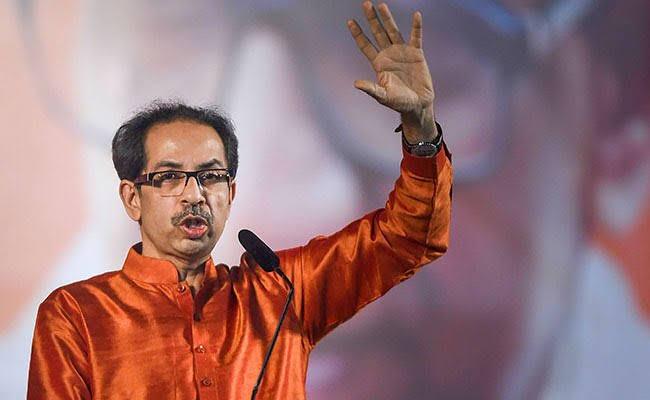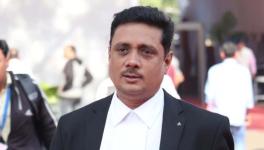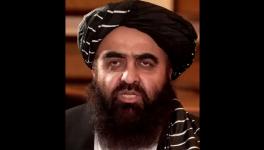Uddhav’s Shiv Sena: Caught Between the Old and the New

The annual Dussehra melava at Mumbai’s Shivaji Park is an unmissable ritual in the Shiv Sena. Lakhs of party workers and sympathisers from across Maharashtra gather and bond while listening to a Thackeray deliver the most significant address of the year. In 2012, party founder and demagogue Bal Thackeray was ailing and skipped the event, only the second time he had done so in 46 years. He was on video, instead. Obviously unwell, Thackeray’s trademark swagger and thunder were missing, the saffron kurta was still there. With folded hands, he requested Shiv Sainiks to cooperate with son Uddhav Thackeray and grandson Aaditya in the coming years.
The irony of that request, after decades of lambasting the Gandhis and Congress for being a “dynastic party”, was lost in the poignancy of the moment. That request turned out to be Thackeray’s last. It has since proved to be the insurance cover for Uddhav and Aaditya, to get the party to fall behind them as they transform the Shiv Sena to suit the present political environment; murmurs of discontent are capped in shakhas (unit offices) where local leaders remind one another of their beloved late leader’s words.
There can be no doubt that Shiv Sena—the party indicted in the Mumbai riots of 1992-93, that has been stridently anti-Muslim, that dug up cricket pitches to protest matches with Pakistan, that torched shops for selling Valentine gifts—is transforming under Uddhav’s leadership as well as the demands of being in power. But it would be too early in the transition process to consider it done. For sure, the party that leads the Maharashtra Vikas Aghadi government in Maharashtra since last year and has stood up to the BJP’s political onslaught—its junior partner for two decades—is not the old Shiv Sena. However, its new contours are still forming, new fundamentals firming up, its pivot not steady; the Sena is not yet the saviour liberals believe it to be.
Since Uddhav Thackeray became the chief minister of Maharashtra last November, and Aaditya a minister in his government as well as his political companion and adviser, the transformation in the party has gathered momentum. It agreed to align with the Congress despite mocking it for decades, Aaditya became the first Thackeray to contest an election, Uddhav defers to Nationalist Congress Party chief Sharad Pawar whose politics never matched that of his father, he agreed to helm the awkward Sena-NCP-Congress government despite the Thackerays’ preference to remote-control one, and above all he batted for secularism when provoked about his Hindutva two months ago.
These, coupled with events in which Thackeray came across as sober and reasonable, not given to his father’s demagoguery and dramatics, not backing the occasional muscle flexing antics of party workers, have prompted the commentariat to commend him and rush to see liberalism in the party. Thackeray’s Sena is unlike that of his father but it needs time to evolve into the strong regional and inclusive party it aspires to be.
When the first Shiv Sena-BJP government was sworn into power in 1995, the party was riding high on its belligerent Hindutva agenda and Uddhav was a young man passionately involved in wildlife photography and conservation. He had little say in the way things were. His father and Sena’s senior leaders—all much older to him and central to the party’s formation in 1966—believed that they were on the right track and Hindutva had catapulted the party to power in Maharashtra. After all, Thackeray senior was the first major political leader to acknowledge the role of his party workers in demolishing the Babri Masjid.
In 2003, when Uddhav was selected to be the party’s working president ahead of cousin Raj and other front-line leaders, there was disquiet but no one said a word to the party boss. The concern then was that he was too mild and sober, he spoke reasonable and sensible stuff, he shunned demagoguery that Sainiks were used to, he did not have experience in the political outfield, he had done few tours and fewer public rallies, he knew virtually nothing about agriculture and so on.
Uddhav went about filling in the gaps and to remould the party. In four years, he had formed his network of advisors and loyalists within the party, and launched the inclusive “Mee Mumbaikar” campaign ahead of the Mumbai municipal corporation election. It ran counter to the party’s sons-of-the-soil mantra. Its message was that anyone who lived and worked in the city, irrespective of where she/he migrated from, was a Mumbaikar; being Maharashtrian was not the determining factor. Faced with a backlash from the party, he retreated. The old guard had won. The Sena’s poor track record of governance in municipal corporations, especially Mumbai, has not helped his cause since.
In the 2014 general and state elections, it was clear he was carrying a burdened political legacy, part of which would stand him in good stead and part which would not serve the Sena in a changed political environment. Thackeray and the Sena spent the next five years in discomfiture, desperate to call off the alliance but unable to walk out of BJP-led governments at the Centre and in Maharashtra. In alliance with the BJP, the Sena usually won more seats than its partner in Assembly elections since 1995—between 62 and 73 of the 288 seats. The BJP tally was always lower. In 2014, when they contested independently, the Sena still managed 63 but the BJP had picked up 122. Worse, it had snatched 12 seats that Sena held since 2009 and relegated it to second position in 32 of 50 other seats. There was no doubt that the “big brother” had been left behind.
Marginalised and diminished by the BJP since then, the title of “Hindu Hriday Samrat” shifting from his father to Prime Minister Narendra Modi, the writing on the wall was clear last year: if the Sena did not carve out its own political space, its relevance would be finished in the coming years. In a sense, the Sena was pushed to change in order to survive. The post-result days were Thackeray’s days of hard reckoning. Eventually, he decided to truck with the NCP and Congress, parties he used to lambast. The Sena cannot be BJP-lite. Its future lies in being less of the Sena it used to be, in occupying the anti-BJP space in Maharashtra, filling in—ironically—the space that the Congress held though the two are so different that their voters will not switch sides.
In power, Thackeray has kept his moderate and calm self going, shown the sagacity to listen to Pawar, and ignored the slights that occasionally come from Congress folks. It’s been a difficult year, especially with having to manage an unprecedented pandemic and its impact (Maharashtra is worst-hit with nearly 1.9 million cases and more than 46,000 deaths), steer the economy and keep Sainiks—given their huge expectations of rewards or straining at the leash to be their old fiery selves—on the leash.
There is the occasional flare-up of the sort that happened in Mumbai last week when an over-enthusiastic worker demanded that Karachi Sweets change its name, the cops moved against a social media commentator who had spewed venom against the Thackerays, the government and Mumbai municipal corporation has moved against TV anchor-propagandist Arnab Goswami and actor Kangana Ranaut for their unprovoked attacks on the government and family.
The Enforcement Directorate raided Sena MLA Pratap Sarnaik. He had demanded re-opening of the Anvay Naik suicide case that eventually had Goswami arrested, he had also moved a breach of privilege motion against Goswami in the Assembly. The Sena is countering this vendetta politics but Thackeray’s government has not yet shown the stomach to, say, revisit the Judge Loya case or oppose the Centre on Bhima-Koregaon arrests.
In Sena circles, Aaditya’s role in the transformation of the party is grudgingly acknowledged but, as his father was, he too is being seen as an upstart, out of touch with the party’s roots and large swathes of the state. His English upper-class education is seen as antithetical to the party’s ideology. His youth and relative inexperience held against him. His focus on issues like Mumbai's nightlife and open-air gyms are out of step with urgent livelihood and infrastructure issues. The grouses have more than a grain of truth in them. However, Aaditya has brought acceptability to the Sena in Mumbai’s chattering circles, among its movers-and-shakers.
The Sena heading the government is, so far, mellow and reasonable. It helps that most of the earlier trouble-makers have either been marginalised within the party structure or have passed on into the ages. It helps that the new breed of leaders have less appetite for muscle flexing tactics. It also helps that the party in power can get things done (such as filing cases for a social media comment) without cadres committing arson on the streets of Mumbai. Also, Uddhav has surrounded himself with a coterie of advisors who know the road ahead for the party cannot be the road they left behind.
It’s evident that the Thackeray men—backed by Uddhav’s ambitious wife Rashmi—now want the Sena to be known not merely as a party of stone-pelters, trouble-makers and city-stoppers. Can they pull it off without alienating the Sena’s cadre and its core base, is the important question. Hindutva is a key element of this balancing act. A party cadre reared on the ideology is uncomfortable with the centrist position the boss seems to often take. To placate his flock and to underscore his difference from his new allies, Thackeray reaffirms his commitment to Hindutva every now and then. On every such occasion, he takes care to distinguish it from the BJP’s Hindutva and lay equal claim to Ram Temple. The Congress welcomed the temple too, so the issue does not embarrass anyone in the Maharashtra government. The issue of awarding the Bharat Ratna to Vinayak Damodar Savarkar is another ballgame altogether, but it is off the table for now. A key dilemma it faces is about its outreach to Muslims; it cannot embrace the community, the community cannot forgive its role in 1992-93 riots.
In 2020 and beyond, the Thackerays know that neither the xenophobic interpretation of sons-of-the-soil nor Hindutva will sustain and nourish the Sena. In Maharashtra’s crowded four-party landscape, with a dominant BJP, it has to carve out a new identity that’s centrist compared to its former self, but not too centrist for its cadre, one that’s regional but not provincial. Uddhav Thackeray’s Shiv Sena, then, is a work in progress.
The author is a senior Mumbai-based journalist and columnist. She writes on politics, cities, media and gender. The views are personal.
Get the latest reports & analysis with people's perspective on Protests, movements & deep analytical videos, discussions of the current affairs in your Telegram app. Subscribe to NewsClick's Telegram channel & get Real-Time updates on stories, as they get published on our website.























